Note: GJEL Accident Attorneys regularly sponsors coverage on Streetsblog San Francisco and Streetsblog California. Unless noted in the story, GJEL Accident Attorneys is not consulted for the content or editorial direction of the sponsored content.
A 74-year-old man was killed on International in East Oakland Monday afternoon. From the San Jose Mercury News:
Contreras Villatoro was walking northbound in a crosswalk when he was hit by a silver Infiniti sedan going eastbound on International Boulevard, authorities said. The driver fled in the vehicle. Contreras Villatoro was pronounced dead at the scene.
Bike East Bay's Robert Prinz reacted on Twitter. "Advocates have been pleading with Oakland DOT and AC Transit to act faster on their International Blvd 'quick build' safety upgrades project. In the year since it was announced over a dozen people have been killed by drivers. How can anyone not be horrified by this?"
On the other side of the Bay last week, a 72-year-old man was hit crossing Fulton Street at Arguello. From the advocates at Walk San Francisco:
This is the first pedestrian death in San Francisco in 2024, and happened at a known dangerous intersection. Fulton Street, which runs along the edge of Golden Gate Park, is particularly dangerous, with serious issues with speeding and frequent crashes. It is on the “high-injury network”: the 12% of streets where 68% of crashes occur.
Other pedestrians have recently died on Fulton Street. On Saturday, May 21, 2022, an elderly woman was crossing Fulton Street at 37th when she was hit and fatally injured directly outside of the Golden Gate Park Senior Center.
It's clear this year is shaping up a whole lot like prior years: DOTs on both sides of the Bay seem incapable of addressing the ongoing carnage. And even when they spend millions on safety and transit projects, they water them down so people continue to die.
Take Arguello, which was repaved, restriped, and given a safety project in 2019. But rather than provide concrete-protected bike lanes and intersections -- which also make streets much safer for pedestrians -- SFMTA repainted the same, near-useless bike lane stripes.
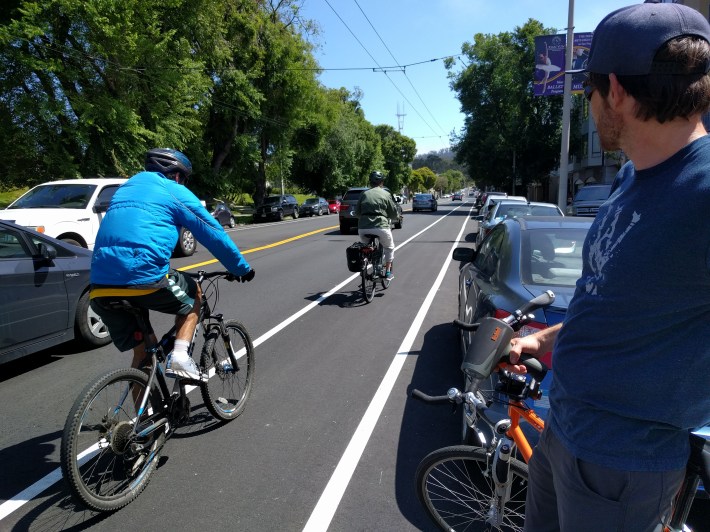
Similar story on the busway and street rebuild on International, completed in 2020, at a cost of $232 million. Rather than physically separating buses from private motor traffic with concrete curbs, as was the original plan, it also depends on paint. Traffic Violence Rapid Response published a study on the compromises that made International a death trap, with motorists speeding and using the bus lanes pretty much continually.
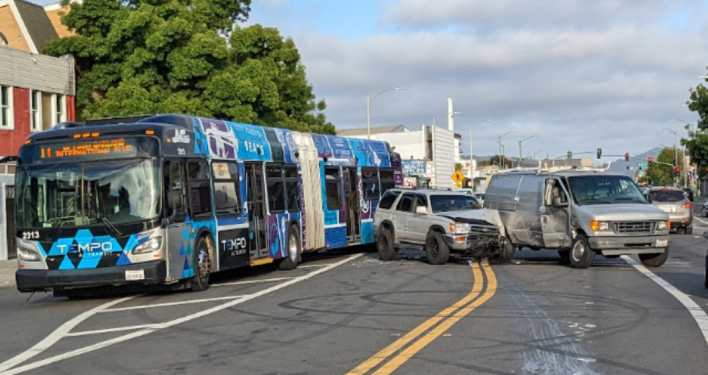
It shouldn't be like this. More and more, concrete barriers and blocks, used in other cities to prevent speeding and other forms of reckless driving, are popping up all over Oakland, as seen in the lead image of Alameda Avenue in Fruitvale. But they're not being used to prevent speeding, provide refuge on crosswalks, slow turning movements, or keep drivers out of bike and bus lanes.
They're being used to stop encampments. San Francisco is also using concrete Jersey barriers, but to keep streets clean and clear for conference-goers.
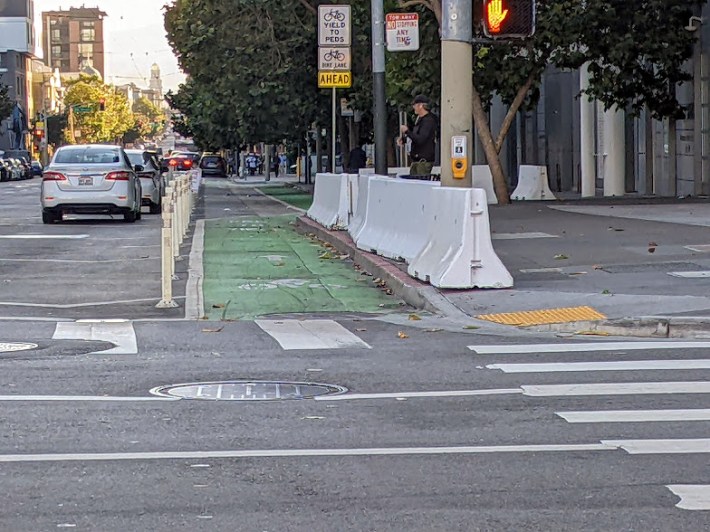
Meanwhile, Senator Scott Wiener is working on legislation to require speed limiters in new cars sold in California, starting in 2027. Let's be clear: speed-limiting technology is absolutely needed to help stem our ongoing traffic carnage. But even if it becomes law, who knows how long it will really take before it tangibly changes outcomes. A much simpler, powerful speed-limiting solution already exists. It just isn't being used (except in super rare exceptions) to end road carnage.
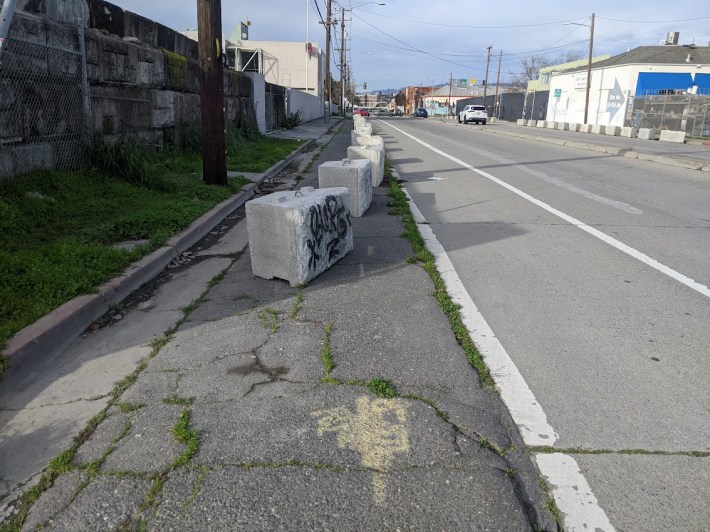
Prinz has told Streetsblog that part of the problem lies in state laws that make it more complicated, but not impossible, to use concrete for traffic control. "There is a dichotomy in the law which has a lower bar for implementing closures relating to crime or dumping, but a higher bar for implementing the exact same thing but relating to traffic safety."
There's also pushback from fire departments, which seem to want cities to maintain giant street sizes to accommodate giant trucks rather than adjusting their vehicles to function on streets with real safety features. "I have pitched some state code revisions to legislators, bringing more parity to these code sections, but haven't gotten any takers yet," said Prinz.
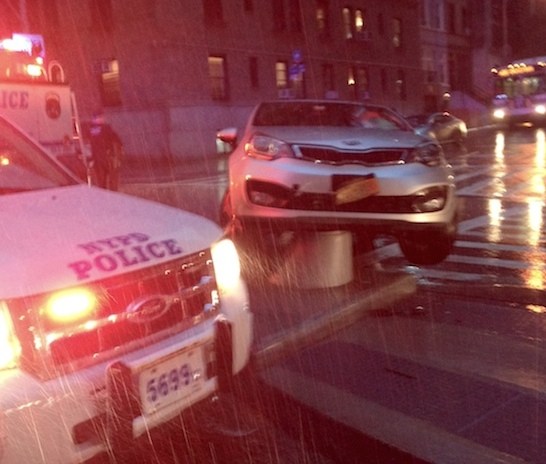
Forgive me for sounding like a broken record, but until cities start putting concrete barriers between people's fragile bodies and fast-moving traffic, everything else is largely performative. It's long past time for lawmakers to treat traffic violence as a race to keep people whole. DOTs desperately need to redesign streets to punish reckless driving, not facilitate it. That means passing laws that enable and require DOTs to use quickly deployable concrete diverters and barriers that prevent speeding everywhere all at once.






